NEMAA Artist Series: Animating the City
Susannah Schouweiler profiles John Akre, whose quirky stop-motion films and street-animation ventures give voice to the unsung songs of the neighborhoods and people who make the city vibrant
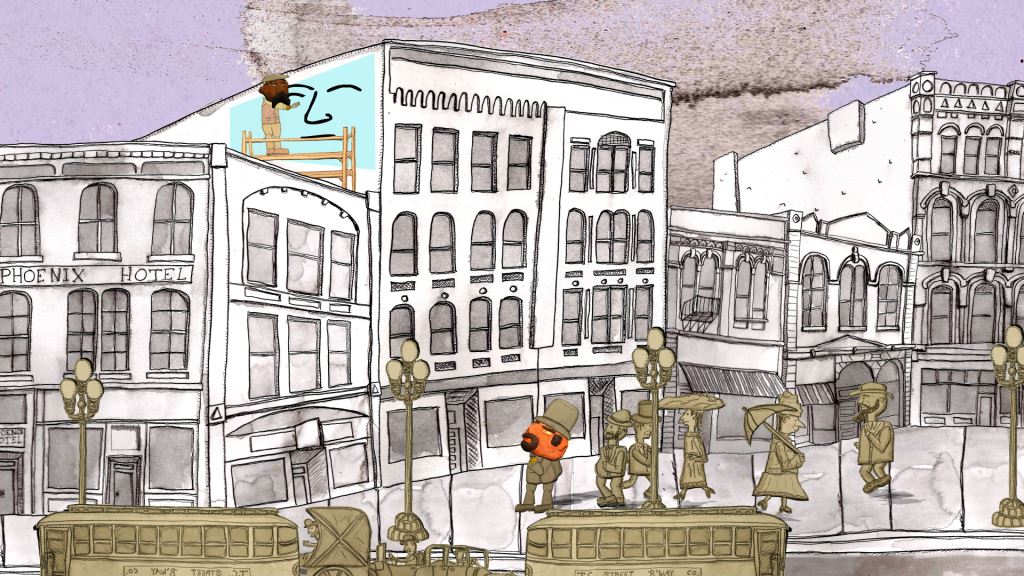
introductionThis is the fifth in a sponsored series of articles featuring member artists of Northeast Minneapolis Arts Association, a non-profit arts organization that works to build a more vibrant, diverse and economically healthy community through the arts.
“My world changed when I saw Charlie Chaplin for the first time,” says NEMAA member artist and filmmaker John Akre. “I was immersed in TV and film when I was a kid – I loved the wordplay and puns of Rocky and Bullwinkle, the great characters,” he says. A child of the ‘70s, he watched Zoom, too, a public television show for kids out of Boston. In each episode, they’d show a short film made and submitted by children, just like him. “On Zoom, I saw kids doing stop-motion animation; seeing their examples, soon I was reading every book I could find about how to make them myself.” A neighbor had an old 8mm camera that no one used anymore, and he gave it to Akre. “And so, I was playing with film when I was nine, making movies by the time I was ten.”
“I took odd jobs as a teenager, and the first thing I did with my own money was buy silent comedies and show them to my friends and family,” he says. “I found a place where I could get these old 8mm films – Buster Keaton, Laurel and Hardy, Felix the Cat.” But, even then, he was looking to those early films to teach himself the craft of making them. “I always wanted to use these tools myself,” he says. “I mean, this is magic. I can make this impossible thing happen.” As a young man, he looked to the early Russian directors for inspiration on play with film form and editing, “and the ways you affect people in a visceral way by expertly editing the film.” He adds, “and I really liked the French Surrealists like Cocteau, too; they were close to the silent comedies I loved, in their sense of the absurd.” He taught himself the basics: “I made mistakes and learned – about lighting, focus, framing, all that – by just doing it.”
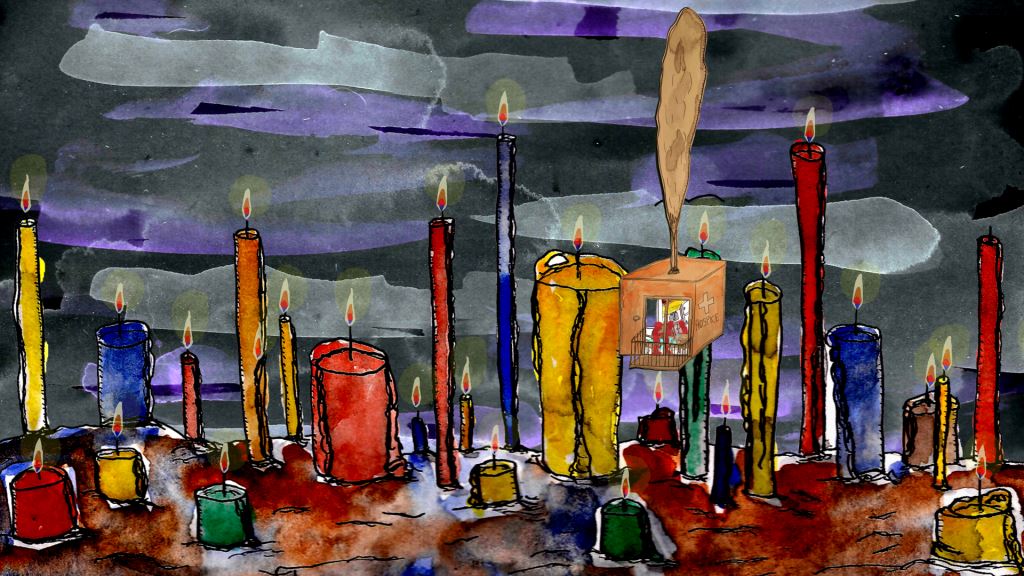
And alongside grown-up day-jobs, with occasional bouts of full-time creative practice on the side, he’s continued in the work. He’s a teaching artist for COMPAS and has worked with kids to make films via Intermedia Arts and various summer camps; he offers film classes through Hamline University and quarterly animation classes through IFP MN. He works now mostly in stop-motion animation, set against hand-drawn backgrounds and enacted with paper-cut and hand-shaped clay characters, painstakingly positioned and filmed, increment by increment:”It takes hours of positioning and filming the figures to create just a few seconds’ worth of animation,” he says. “I make the faces in clay, then photograph a bunch of images of that clay on a green piece of paper, like a green screen I can fill in with drawings later. I make body parts out of paper, India ink the drawings, and cut them out with an X-ACTO knife, and then take those images to the computer and add movement and other animation digitally.”
But before he begins to film, he focuses on the stories he wants to tell: stories drawn from his own life and childhood, and from the neighborhoods he watches humming around him as he bikes through the city. “I start the day writing, getting my ideas on paper,” he says. “It’s a lot like writing a novel, treating the screenplay like a book. I usually have some feature film of my own in the works, along with my teaching and other projects.”
“Perfection is something that turns off your mind while you’re watching. When you watch a Disney film, it’s beautiful, but so slick, you watch it passively. Imperfection keeps the audience engaged.”
He’s always been interested in the small, human histories of the Twin Cities – that whiff of remembered vibrancy that lingers around now derelict but once thriving parts of town. He says, “When I was little, I used to look at maps, how cities are arranged; I’d copy them, draw them myself by hand.” He adds, “I also decided, as a kid, not to drive a car. Even then, I could see what cars do to cities – how they change the ways we live together there.” He’s always biked, walked, ridden the bus; he never wanted to move through his life closed off from the world, he says, boxed up in a vehicle and corralled along highways and busy thoroughfares to get from here to there. “A place isn’t made of roads and cars and buildings. People are the place, and it’s that sense of place that ties us together.”
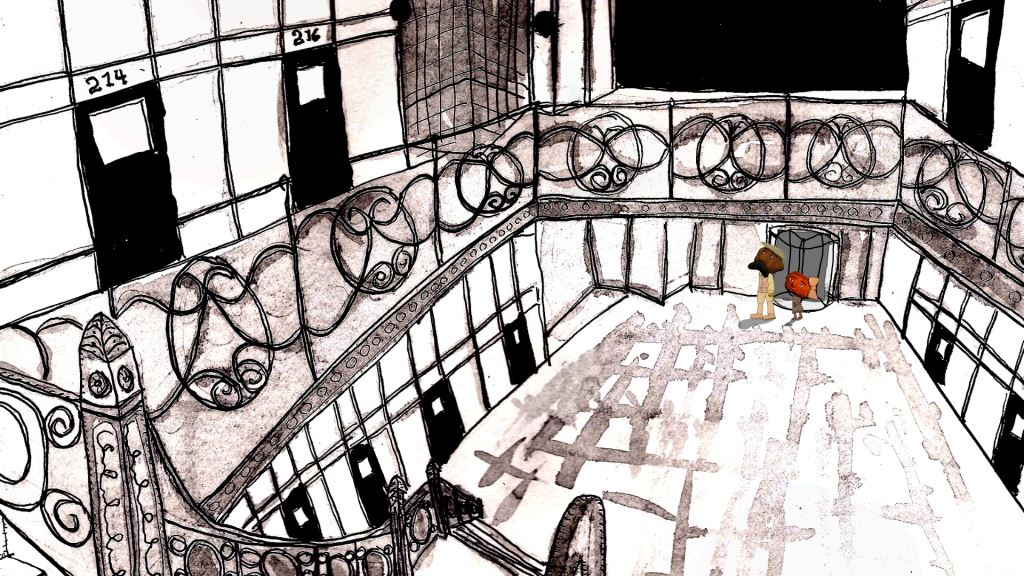
The look of his films is old-fashioned, occasionally even crude, as if a throwback to the early days of cinema. His animation wears its handcrafted imperfections proudly: choppy movement and tinny scores, rough-edged paper cut-outs and ink outside the lines. But the apparent artlessness of his films is an apt foil for Akre’s keen wit and sharp eye; the films’ roughness lends his moving pictures warmth, a human touch. The whimsy of his imagery disarms a viewer, such that the subtlety of his message slides in, all the more potent for not announcing itself too loudly.
Thanks to a Minnesota State Arts Board grant, Akre was able to take his animation to the street this summer. One of his most recent projects, Minneapolis Beneath the Asphalt, was undertaken with city residents in neighborhoods all over the city, by way of Akre’s mobile Animation Station – just a laptop, a tripod and camera, an old-fashioned movie screen so people can watch the film in progress, and some basic materials with which to create images and figures. He enlisted passersby at Art-A-Whirl and various Open Cities events to film images and record their thoughts on how the city changes over time, what might be hidden under all its parking lots and asphalt. He asked them: What’s beneath the surface of Minneapolis? What’s the potential that comes above?
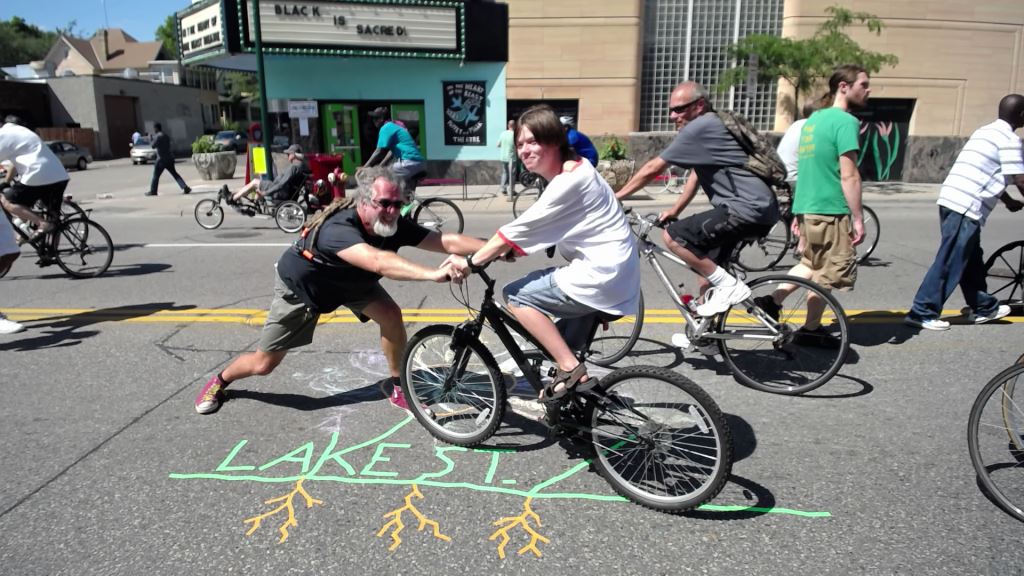
The animation resulting from that work on the streets is upbeat – silly filmed poses, bikes and pedestrians in motion, and fanciful chalk drawings on the sidewalk. The surprises are in the audio accompanying the imagery: residents’ responses to Akre’s questions reflect all the hope and anger, frustration and determination that’s marked the city and its people in recent months.
“Initially, I just wanted to know what people think about asphalt,” he says. “I mean, 48% of Minneapolis is covered with asphalt – that’s a lot of the city that’s just covered up.” He explains, “I was initially thinking pretty literally about that: ‘What was here before the asphalt? What does the asphalt suppress?’ I imagined this public animation project as a kind of meditation on that.” He continues, “But then the Philando Castile shooting happened, and I realized, it’s not just the natural world that’s trying to get out from under the surface. It’s racism and injustice, suppression of communities, too.”
“I want to take animation out in the public,” he says, “to make animation with other people. I want to show them the possibilities and power in using these tools to tell their own stories.” Filmmaking, particularly animation, is often a solitary pursuit, he explains. “I’m always eager to find ways to bring more people into the process.” To that end, in addition to his public art projects and individual filmmaking, he seeks out opportunities to work with other artists: with his partner, Beth Peloff, he began Minnanimate, an annual animation festival screening work by other local filmmakers like him, hosted by the Film Society at St. Anthony Main Theatre.
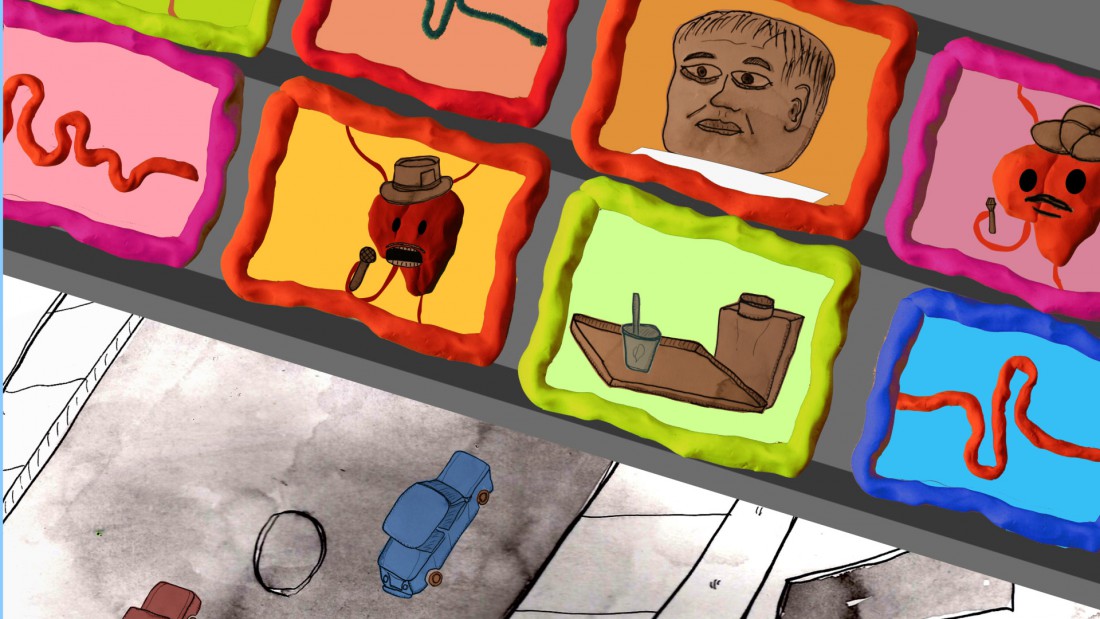
“I want to make my own little films; I have all these stories from my life I want to tell. I just want to keep doing it,” he says. “I’ve learned over the years that the main obstacle is finishing things, letting them go, so I can start on something else. The thing is, if I’m going to actually finish things, they’re not going to be perfect.”
But that’s okay, he says. “Perfection is something that turns off your mind while you’re watching. When you watch a Disney film, it’s beautiful, but so slick, you watch it passively. Imperfection keeps the audience engaged. ‘Mistakes’ in the film take you out of the experience just enough, so that your mind keeps working throughout the viewing.” Remove the highly processed polish typical of big-studio animation, and the viewer actively participates in the watching, Akre says. “All told, I’d rather make sloppy films.”
Related links and information: John Akre is editing the street animation and audio from Minneapolis Beneath the Asphalt now, and the resulting film will be screened in February 2017 at the Trylon Cinema as part of the movie theater’s Northern Exposure series.
You can catch a screening of another of his recent feature animated films, Demolition Dreaming, with live performance soundtrack by Dreamland Faces, at the Trylon on December 1, 2016. For more information about John Akre and his films, visit his website: www.sloppyfilms.net.
This article is commissioned by the Northeast Minneapolis Arts Association and funded by a grant from the Minnesota State Arts Board. Find John Akre’s profile on NEMAA’s website.